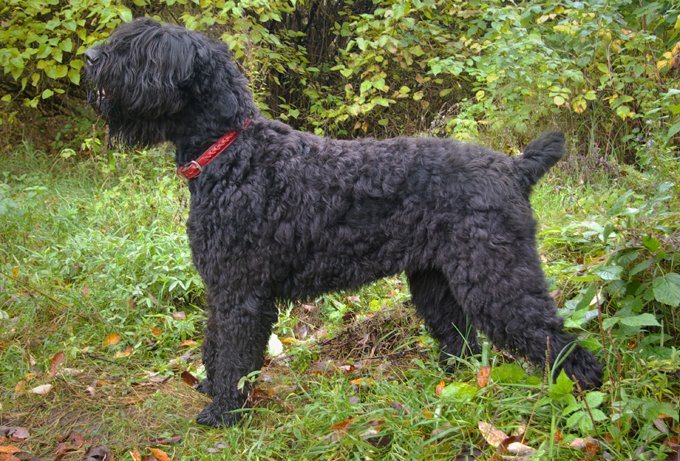Unfortunately, Black Russian Terrier hypoallergenic traits don’t exist. It sheds year-round and leaves hairs and dander everywhere, causing pet-related allergies.
Table of Contents
What does Hypoallergenic Mean?
Do Black Russian Terriers shed?
Although the Black Russian Terrier does not shed but needs constant grooming sessions to prevent mats and to avoid irritation around the eyes. They also need a minimum of 30 minutes of exercise daily, otherwise, they become dull and unhappy.
Are Black Russian Terriers good apartment dogs?
Training a Black Russian Terrier shouldn’t be a hard task to do. Don’t assume that because they are bred for the Army that they need a strict approach to training. They respond best to a positive reinforcement approach, but the owner of a Black Russian Terrier should have a firm hand that will clearly show which rules have to be respected in the house. Show him that you’re in charge, be a good leader and praise him with treats whenever he’s been a good boy.
Do Labradors Cause Allergies?
Black Russian terriers are not known to be heavy shedders, but you may find tufts of black hair left by your terrier. This is particularly common with the longer-haired Russians. Regular brushing and stripping can help to limit hair loss and give your vacuum a break. These dogs are not considered hypoallergenic so may not be ideal for owners with allergies.
How to prevent allergies
Groom your Black Russian Terrier
When it comes to grooming, Black Russian Terriers need a weekly brushing and frequent maintenance to prevent their coats from matting. Use a slicker brush, an undercoat rake, and a stripping comb to maintain their beautiful black coats. If you brush them regularly, they won’t be needing frequent baths and only when they are dirty.
Cleaning
The dense coat of the Black Russian Terrier does not shed much but it is rather long, therefore it should be brushed twice a week to ensure that it stays clean and does not get tangled. A coat conditioner can be used to assist in removing any knots that may have formed. Trimming of the coat of the Black Russian Terrier will only be required about two or three times a year. Stripping the coat of a Black Russian Terrier is also a grooming option. The Black Russian Terrier should be bathed only occasionally, and as needed to prevent the waterproofing of its coat from being damaged. Professional grooming may be needed for dog show purposes as there are several intricate grooming styles in which the Black Russian Terrier may be shown.
Designate Dog-Free Zones
Coat
The result of this breeding campaign by the Red Star Kennel would be the creation of the Black Russian Terrier. As previously mentioned, there were many breeds that went into the development of this new dog. The first generation of cross-breeding included several important breeds, with the goal being to develop a “war dog” that was large and strong, with an unassuming but aggressive nature that could be trained with ease. The most influential members of the Black Russian Terrier’s lineage would be those breeds that brought specifically useful physical and temperamental qualities. At this time, little concern was paid to appearance apart from size and weatherproofing the coat for climate concerns. With these precise needs in mind, the Giant Schnauzer would have a significant influence on the Black Russian Terrier breed. The Giant Schnauzer was known for its large size, dominant personality, intelligence, and trainability. The Airedale Terrier was another breed that had a strong influence on the Black Russian Terrier’s development. Valued as a confident, courageous, and fearless dog, the Airedale Terrier possessed much desired characteristics in a military breed. The Rottweiler was also used in the development of the Black Russian Terrier, because of its nature as a large, self-assured breed and a competent guard dog.

